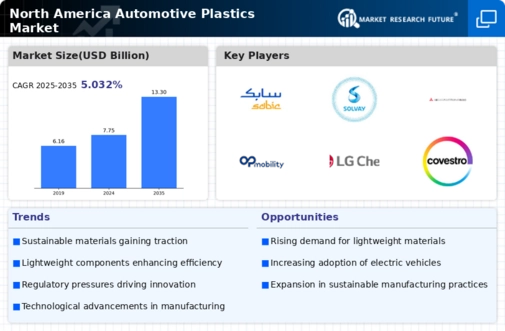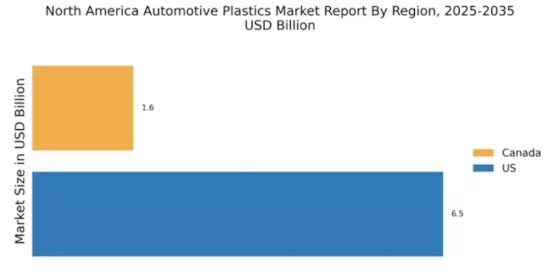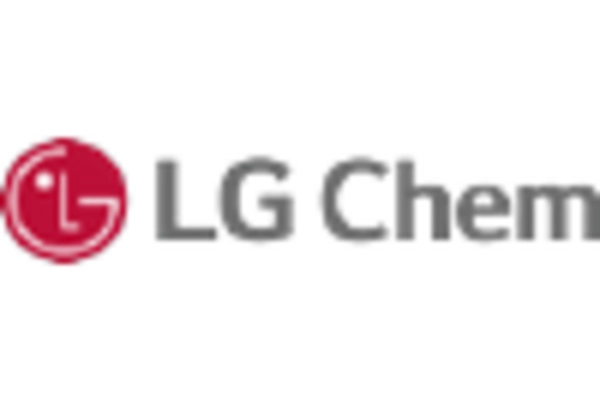Shift Towards Electric Vehicles
The shift towards electric vehicles (EVs) is a pivotal driver for the automotive plastics market in North America. As automakers transition to EV production, there is a growing need for lightweight materials that enhance battery efficiency and overall vehicle range. Plastics play a crucial role in reducing the weight of EVs, thereby improving their performance and energy efficiency. The automotive plastics market is expected to benefit from this trend, with estimates suggesting a market value increase to $40 billion by 2030. This shift not only supports the automotive industry's sustainability goals but also aligns with consumer preferences for eco-friendly transportation options.
Consumer Demand for Fuel Efficiency
Consumer preferences in North America are shifting towards vehicles that offer better fuel efficiency, significantly impacting the automotive plastics market. As fuel prices fluctuate, consumers increasingly seek lightweight vehicles that enhance fuel economy. This trend compels manufacturers to utilize advanced plastics that reduce vehicle weight without compromising safety. The automotive plastics market is projected to grow at a CAGR of around 5% from 2025 to 2030, driven by this consumer demand. The integration of innovative plastic materials not only meets consumer expectations but also aligns with manufacturers' goals to improve overall vehicle performance and reduce emissions.
Regulatory Compliance and Standards
The automotive plastics market in North America is increasingly influenced by stringent regulatory compliance and standards aimed at reducing environmental impact. Government regulations, such as the Corporate Average Fuel Economy (CAFE) standards, mandate improvements in fuel efficiency, which in turn drives the demand for lightweight materials. As a result, manufacturers are compelled to adopt advanced plastics that meet these regulations while ensuring safety and performance. The market is projected to grow as companies invest in research and development to create compliant materials. In 2025, the automotive plastics market is expected to reach approximately $30 billion, reflecting a growing emphasis on sustainability and compliance with environmental standards.
Cost Efficiency and Production Optimization
Cost efficiency and production optimization are critical drivers in the automotive plastics market in North America. Manufacturers are increasingly focused on reducing production costs while maintaining high-quality standards. The use of advanced plastics can lead to lower manufacturing expenses due to their ease of processing and lightweight nature, which can reduce shipping and handling costs. As a result, the automotive plastics market is projected to grow, with an anticipated market value of $32 billion by 2030. This focus on cost efficiency not only benefits manufacturers but also allows for competitive pricing, ultimately enhancing consumer access to innovative automotive solutions.
Technological Innovations in Material Science
Technological innovations in material science are reshaping the automotive plastics market in North America. Advances in polymer chemistry and processing techniques enable the development of high-performance plastics that offer superior strength, durability, and thermal resistance. These innovations allow manufacturers to produce components that can withstand harsh automotive environments while maintaining lightweight characteristics. The market is likely to see a surge in the adoption of these advanced materials, with projections indicating a potential increase in market value to $35 billion by 2030. This growth is indicative of the industry's commitment to enhancing vehicle performance through innovative material solutions.


















Leave a Comment